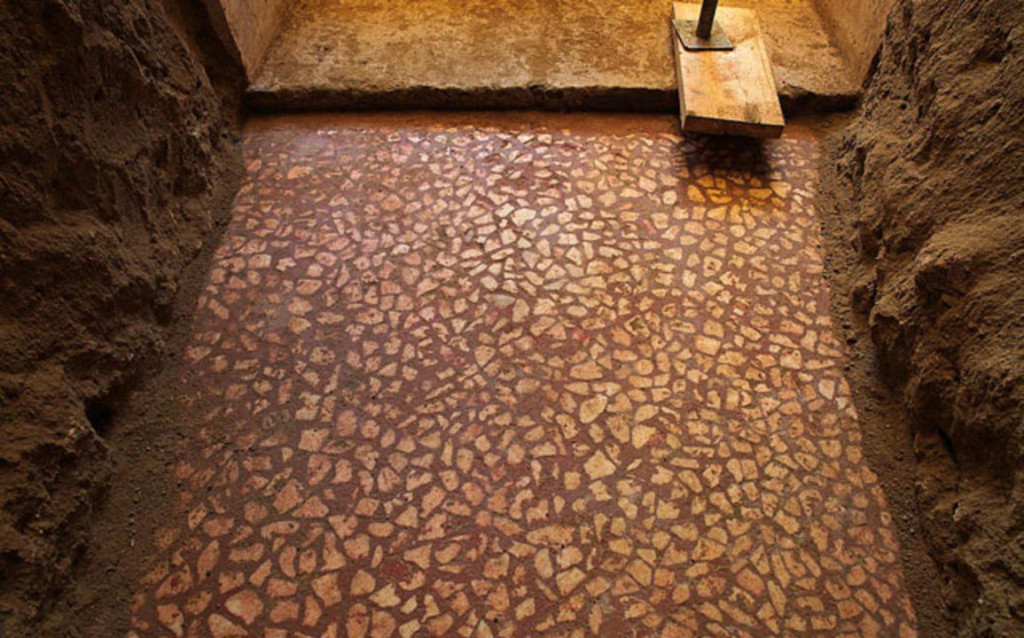 AMPHIPOLIS, GREECE—Removal of loose sand from the antechamber directly behind the wall with two sphinxes at the tomb at Amphipolis has revealed a floor section made of irregular pieces of white marble on a red background. This room also has traces of a fresco with blue coloring on the wall behind the sphinxes. Archaeologists told The Greek Reporter that all three chambers of the unusual tomb had been filled with sand when the structure was sealed. They think that the inner walls may have been installed to hold back the sand, and that gaps in the walls may have been part of the sealing process. The team is also working to protect the excavation from rain, and shore up the tomb against the pressure exerted by the earth in the next chamber. To read about the search for Alexander the Great's lost tomb, see ARCHAEOLOGY's "In Search of History's Greatest Rulers."
AMPHIPOLIS, GREECE—Removal of loose sand from the antechamber directly behind the wall with two sphinxes at the tomb at Amphipolis has revealed a floor section made of irregular pieces of white marble on a red background. This room also has traces of a fresco with blue coloring on the wall behind the sphinxes. Archaeologists told The Greek Reporter that all three chambers of the unusual tomb had been filled with sand when the structure was sealed. They think that the inner walls may have been installed to hold back the sand, and that gaps in the walls may have been part of the sealing process. The team is also working to protect the excavation from rain, and shore up the tomb against the pressure exerted by the earth in the next chamber. To read about the search for Alexander the Great's lost tomb, see ARCHAEOLOGY's "In Search of History's Greatest Rulers."